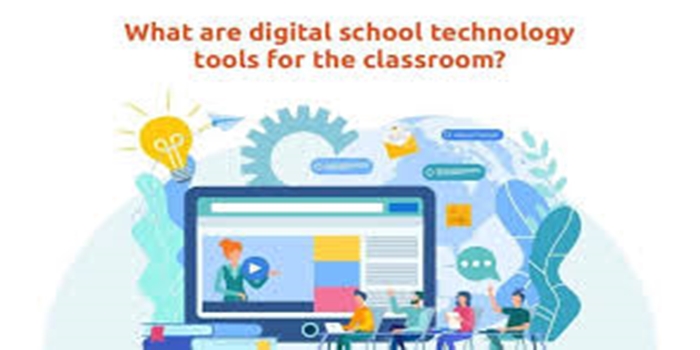In this article, we discussed the meaning of technology in the classroom, the benefits, the examples, ways to use tech in class, pros and cons.
Definition
Technology in the classroom, also known as educational technology, helps students learn and communicate. It can include tools like computers, tablets, and online platforms.
Technology in the classroom can make learning more engaging, interactive, and enjoyable. It can also help students learn complex concepts.
Technology in the classroom can benefit students and teachers in many ways, including:
Benefits for students
Engagement: Technology can make learning more fun and engaging, and encourage students to work harder
Personalized learning: Technology can adapt to individual learning styles
Access to resources: Technology provides access to a wide range of educational resources
Preparation for the future: Technology helps students become familiar with programs they’ll use in their careers
Inclusion: Technology can help students with different learning styles and abilities participate in class
Benefits for teachers
Efficient assessments: it can help teachers provide efficient assessments and feedback
Streamlined tasks: it can help teachers streamline administrative tasks
Data-driven insights: Technology can provide teachers with data-driven insights
Automation: can automate some tasks
Professional development: Technology can help teachers develop professionally.
Examples of technology in the classroom include:
Smartboards: Large interactive displays that can be used for annotating, quizzes, polls, and tasks
3D printing: Allows students to create physical models of scientific structures, historical artifacts, and more
Virtual reality: Artificial environments that students can explore using a headset
Augmented reality: Allows students to experience lessons as if they were right in front of them
Gamification: Involves converting lessons into a format similar to video games
Artificial intelligence: Automates grading and feedback, and provides personalized learning
Projectors: Hook up to a laptop and project the screen to a larger whiteboard
Google Classroom: A free web service that helps teachers create, distribute, and grade assignments
Smartphones: Can be used for research and to support students through their community of peers.
Technology can be used in the classroom in many ways, including:
Instruction
Virtual field trips: Take students on a virtual field trip
Videos: Use videos for mini-lessons
Presentations: Add multimedia elements to presentations
Gamification: Create quizzes and games to make learning more engaging
Digital readers: Use digital readers or tablets instead of textbooks
Assessment
Digital exit tickets: Use digital exit tickets to gather student feedback
Online grading: Use online grading systems to assess student progress
Machine learning: Use machine learning algorithms to analyze student data and provide feedback
Communication
Email: Use email to communicate with parents and other teachers
Online platforms: Use online platforms to share grades, attendance, and behavior referrals
Wikis and blogs: Use wikis and blogs for collaborative assignments
Inclusive technology
Text-to-speech: Use text-to-speech to help students with learning disabilities access reading materials
FM hearing transmitters: Use FM hearing transmitters to help students who are hearing impaired
Screen-reading: Use screen-reading to help students who are blind use a computer.
Technology in the classroom has both advantages and disadvantages.
Advantages
Access to information: Students can access high-quality, current information.
Tailored learning: it can provide learning experiences that cater to different learning styles.
Collaboration: Students can connect with classmates in new ways through online forums and group chats.
Engagement: it can make learning more interactive and enjoyable.
Career preparation: Students learn skills that they will need in their future careers.
Disadvantages
Distractions: It can be distracting and may lead to faster but less memorable learning.
Privacy concerns: Students are at risk of cybersecurity threats and privacy breaches when using online platforms and apps.
Dependence: Overreliance on technology can make students dependent on digital tools.
Social interaction can reduce direct social interaction.
Workload: Integrating can be time consuming and add to the workload for teachers.
Inappropriate content: Computers can provide students with access to inappropriate content if the proper security measures are not in place.
A balanced approach to technology integration is necessary.
Conclusion
Technology in the classroom can meaningly enhance student engagement, foster collaboration, and provide access to a vast array of learning resources, ultimately leading to a more dynamic and personalized learning experience when used effectively; however, it’s crucial to strike a balance and consider the individual needs of students to maximize its potential and avoid overreliance on digital tools.


